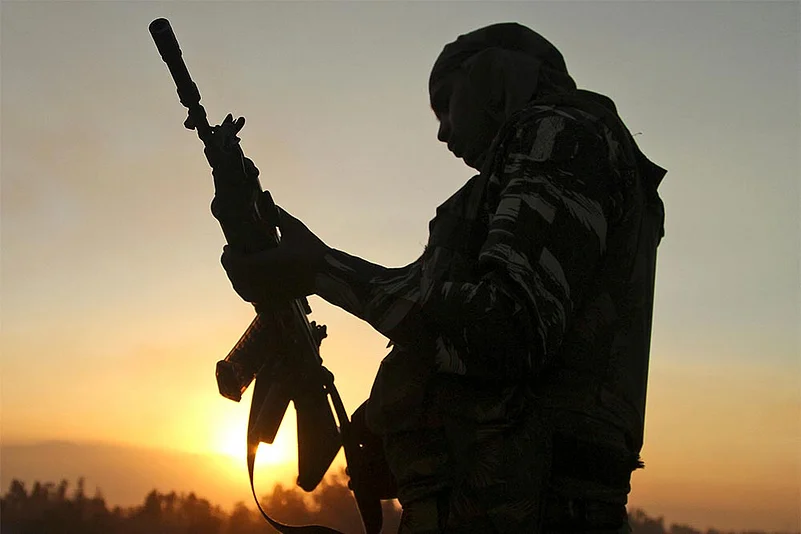An army officer who was part of a team that conducted one of the recent ‘hot pursuits’ into Myanmar, spoke to Outlook on condition of anonymity.
Did you conduct surgical strikes inside Myanmar?
I did. I personally took down 21 militants.
But there is so much ambiguity about whether Indian soldiers actually went inside Myanmar.
(Looks at his companions at the camp and exchanges glances, smiles.) We know what we did. I will go on record if you can get the top authorities to agree. But unless you can do that I will hide behind anonymity.
Why is it shrouded in so much secrecy?
For obvious reasons. It took place inside the territory of another sovereign nation. However, it happened with its consent—from the highest authorities.
Please describe the procedure.
There was not one. It is ongoing.... There is planning. Pre-dawn surprise strikes work best because the enemy is at its most vulnerable. They are off-guard. In one strike I wrung the neck of one them with my bare hands. He had been sleeping. He looked directly in my eye while dying. At that moment, all you want to do is kill the enemy. Revenge becomes the strongest emotion. They gunned down my colleagues. They would have butchered me too. We don’t think, ‘This is a foreign country. We are in some other land.’ That is for planners to think. We think, ‘Enemy. Kill. Before he kills me.’ The smell of blood lingers for days, sometimes weeks. While bathing, while eating, while sleeping, while dreaming.
But there must be some difference between counter-insurgency operations inside India and in another country. Procedural differences.
Look, the enemy is not unknown to us. They are not foreigners. We are not attacking an unknown entity. We know the tactics, the habits. I’ve been involved in counter-insurgency in Kashmir. There the enemy, when confronted on a surprise attack, stands and fights. Here, the first response is to flee. Terrain-wise, there is no difference between Northeast India and Myanmar. It is erroneously believed that rain is a deterrent. Rain helps in camouflaging our movements by drowning out sound.
How do you determine the exact location of an insurgent camp deep inside a jungle in Myanmar? Are you allowed free movement, as in the jungles inside India?
Intelligence. Satelites. Indian army has the right equipment. If the nation is friendly, willing, it is not difficult.
In the 2015 surgical strikes inside Myanamar, Indian soldiers were reportedly ferried to the exact location and air-dropped. Were you part of that?
No comment. Please keep my identity hidden as requested.
At least tell us, for strikes inside Myanmar, are Indian soldiers necessarily air-dropped?
There is coordination between the army of that land. They are not kept in the dark, otherwise it could create problems. Motorbikes are also used for moving in jungles. But we are talking mostly about silent movements. Sneaking up involves tip-toeing, crawling on the ground and slithering like snakes.
















